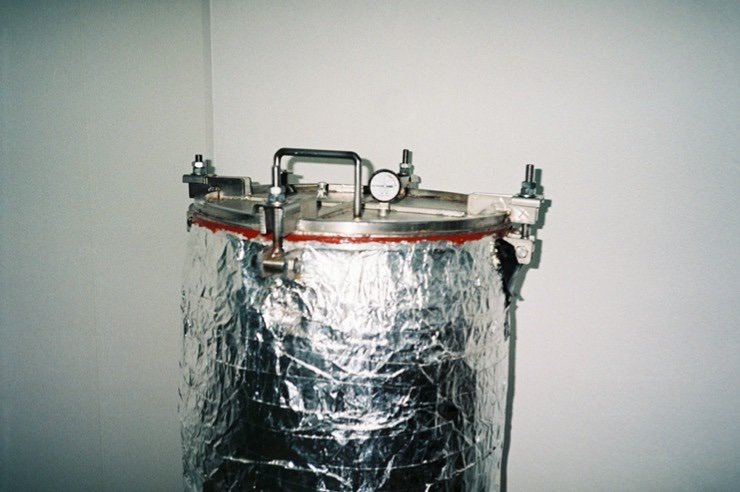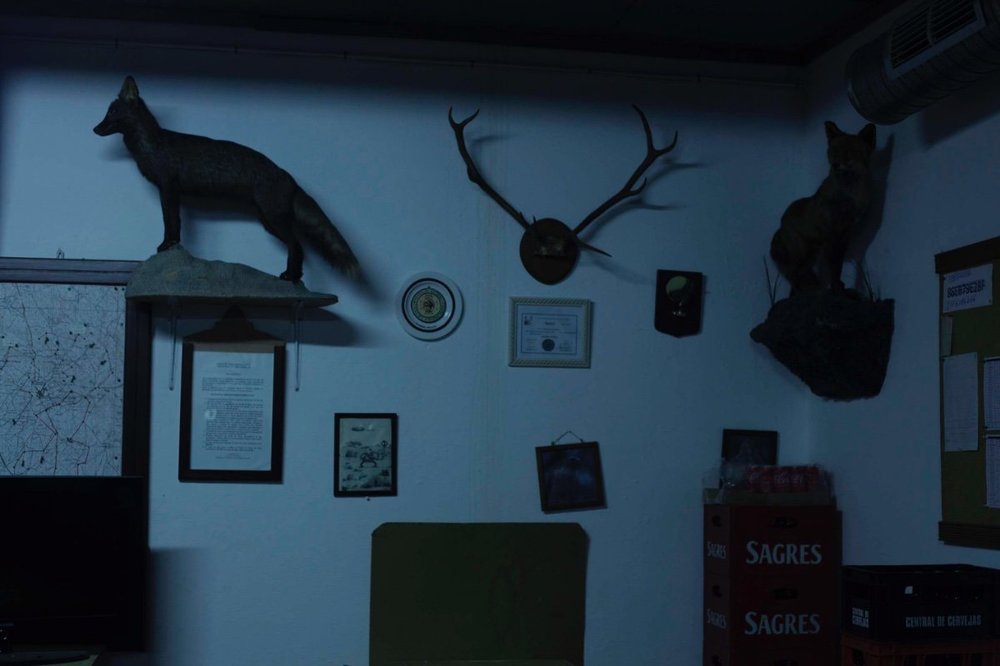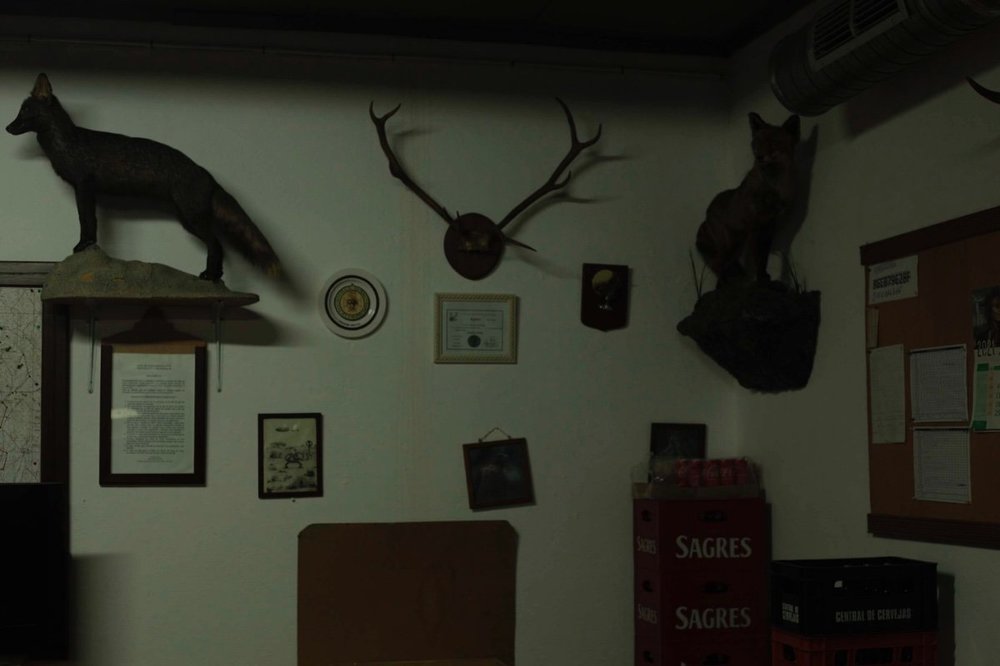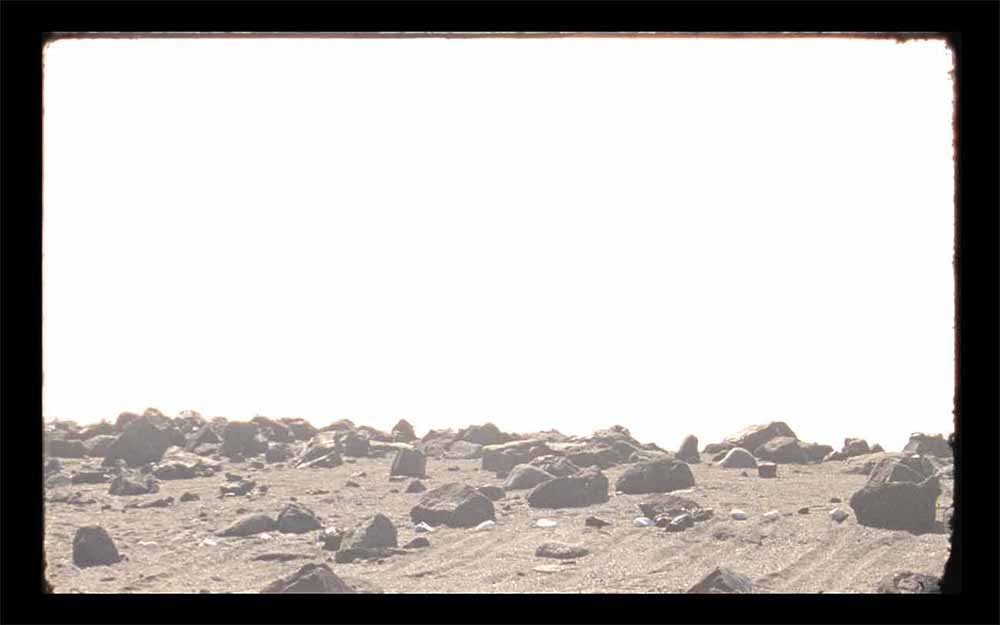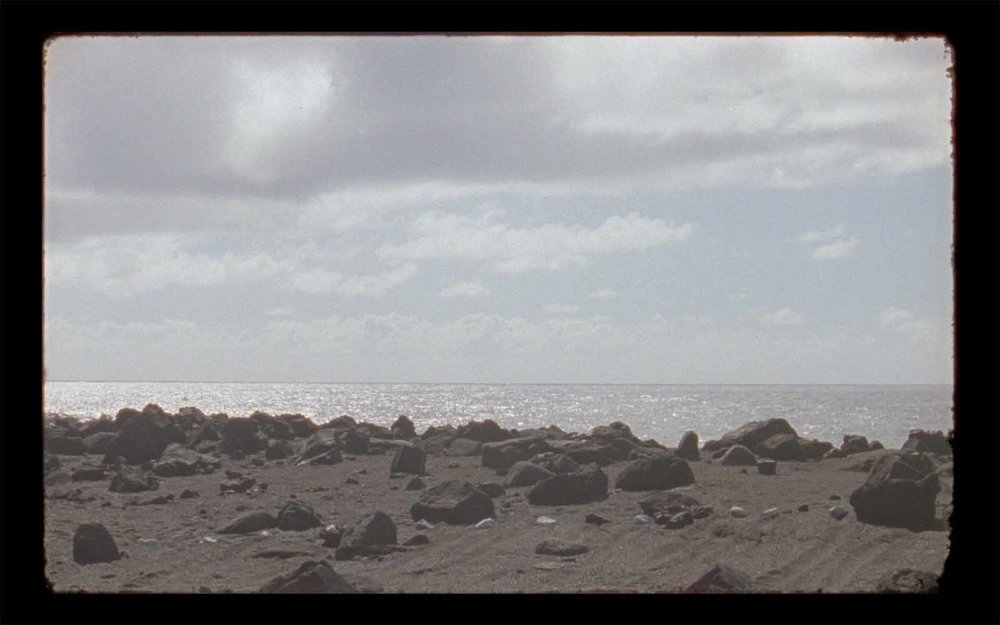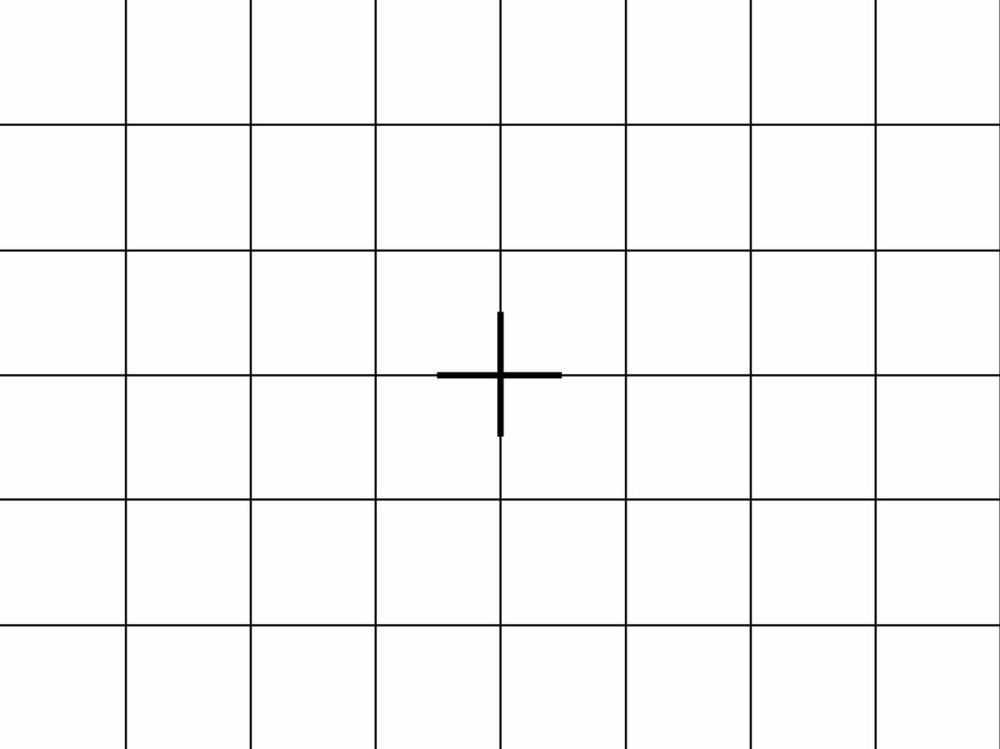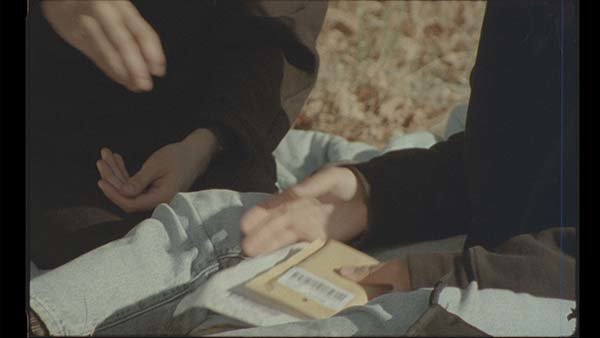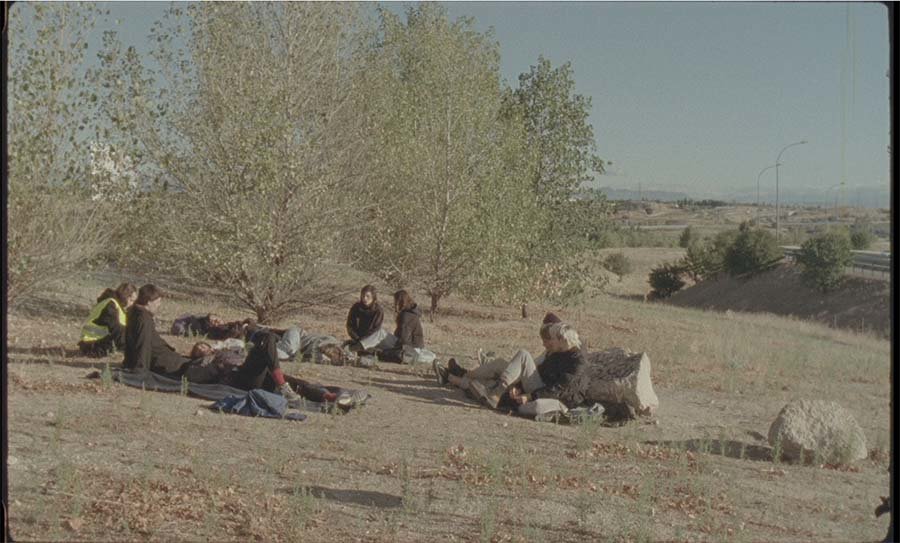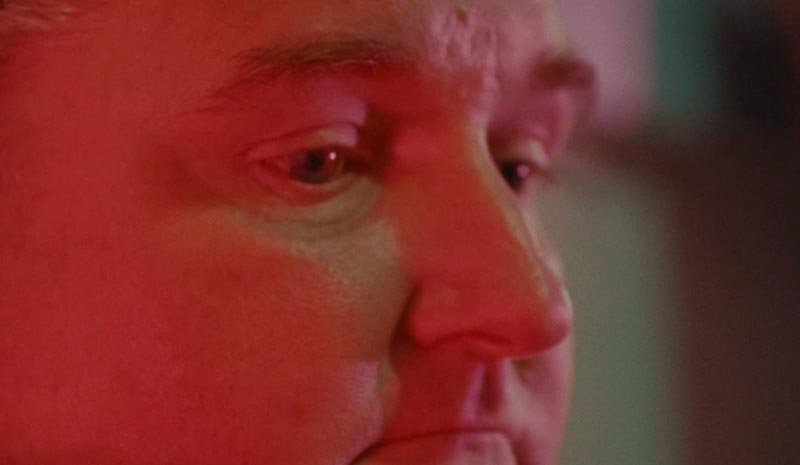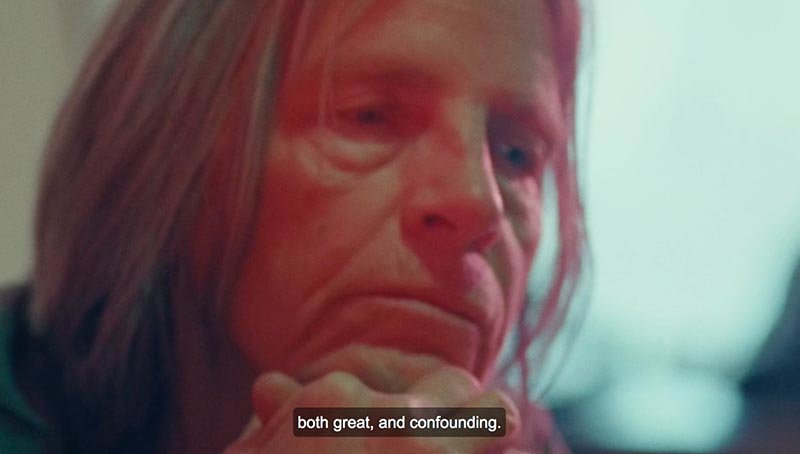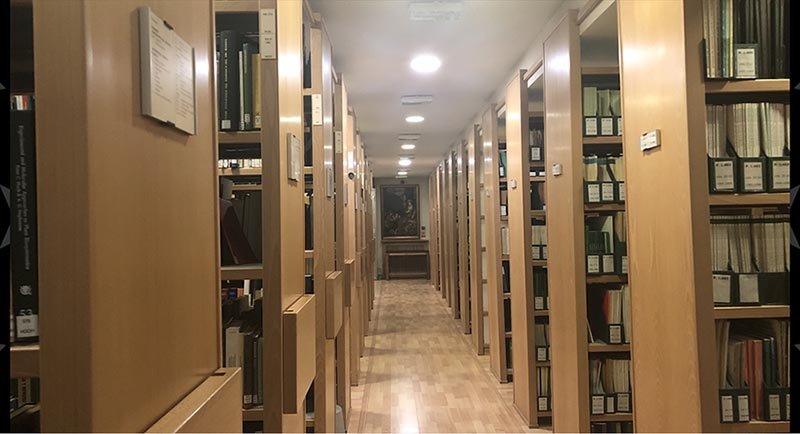
Marta Teixeira P. Simoes
Basic Member-
Posts
23 -
Joined
-
Last visited
Profile Information
-
Occupation
Cinematographer
-
Location
London
Recent Profile Visitors
The recent visitors block is disabled and is not being shown to other users.
-
Hi Nathaly! I ended up using an Aladdin B-Flex 1X1 Bicolour. It turned out very well but please noticed that the location was a small interior without any other light sources and the scale of the shots was never that wide (just like the pictures I attached on my post). I remember considering an Aputure MC at some point because I was afraid that the Aladdin would be too big of a source for the effect but in the end I went with it. I was very pleased with the results. I don't have a still picture from the film to show you, but with a little bit of post production it turned out very close to the reference pictures. The main trick (again, for the kind of effect I was looking for) was to place the light source as close as possible to the camera axis, precisely to mimic the behavior of a flash light. Hope this helps! Best,
-
Hi Adam! I ended up not filming in this place. But I did work recently on another project as a camera assistant where we faced a very similar situation. The cinematographer on the project opted to push one stop and the results were quite good. The film is not out yet but I'll try to post any stills if I get the chance!
-
Marta Teixeira P. Simoes started following Enhancing existing light sources , Best light to mimic camera flash? , 16mm Shoot - Kodak (500T) 7219 - Push one stop or not? and 4 others
-
Hello, I'm currently working on a project to be shot on super 16. For one of the scenes I would like to have a look similar to the light you get from a camera flash.The light is not supposed to actually "flash", I'm just looking for the best option to have the same quality of light for this specific scene - a hard and strong light but also kind of diffused at the same time. Attached are some photos (taken with a camera flash!) that hopefully show what I mean. The location is the same as the one in the pictures - a medium sized room with no windows. Thanks in advance for your suggestions!
-
Hi Karim, Yes, I had come across with this one before. But thank you anyway for sharing it! This scene got a little bit postponed, so thankfully I got some extra time to figure out a good approach after reading all these suggestions ? Will try to keep you posted about the results but it might take a while before I get any footage back
-
I know a lot has been asked about this before but I’m afraid I still have some doubts.I’m currently shooting a documentary on 16mm. One of the next locations where we’ll be is an indoor cafe and I fear maybe I won’t have enough light to film at ease all the men who will be gathering there at dawn.I was able to visit it very fast - you can see a quick video here: https://vimeo.com/manage/videos/647015840?embedded=false&source=video_title&owner=10123724 password: testfootage The setting on my digital camera (5D markII) were the following: 50mm lens, f4, shutter speed 1/60, ISO 500. I’m shooting Kodak 500T (7219) with Zeiss T1.3 lenses and during the scouting I took an incident light metering of almost f2 (1.4(9), not sure how to write this) in some areas further away from the light source available. My questions are: 1) Since it’s a documentary and the director will want to film in any direction of the room, just following the characters, is it worth considering doing a push one development of the Kodak 500T (7219) stock? I’m not necessarily looking for a more contrasted scene. My main reason to do it would be to avoid underexposed faces in areas where I might not get enough reading on my spot meter. Ideally I would like to have maximum of 1 or 1,5 stops under spot reading on skin if the men are against the wall, further away from the light. 2) If I do push, and since I couldn’t test this with the lab, is it safer to rate my light meter at 800ISO or 1000ISO? 3) I was also testing the color temperature. The 2 pictures enclosed are taken with 3200K (the blueish one) and 5500K (the warmer one). If I want my footage to get closer to the warmer tone, I know I should use a 85 conversion filter but maybe it’s wiser I don’t, since I need all the extra light I can get, right? And then adjust the color in post since we will have a good quality scan of the negative after the editing is finished. Thanks in advance for you attention regarding this matter, specially since it’s something that has been discussed before in the forum! All the best, Marta
-
Hello, I just got the results from a camera test and I'm a bit puzzled about the format test. The camera assistant shot a 1.66 reference but in the result the limits are way too close to the edge. As you can see in the image attached, the top limit is even outside the film frame! I've done this test before so I know how it should look like and I'm also sure the test was done properly. My question is if anyone has experienced something similar before or has any idea what might be causing this? The camera is an Arri SR3. Thanks!
-
Hello, I just got the results of a telecine from a project shot on S16 and we've noticed a strange behaviour in some of the shots, specially whenever there's a sky with clouds. I'm not sure if you can spot in the images attached (the detail of the sky is a zoom in on the still), but there's vertical lines all over the sky. The lab says it's because the footage was overexposed, but still I find it very weird that this would result from an overexposure error. When I see it in movement it reminds me more of "digital" noise than film behaviour. This is a rough translation of what they wrote: "It is true that the artifacts come from the ccd cell of the TC. When the negative is overexposed less light passes through the cell. The negative is thicker. And I must increase the "gain" or iso, when I lower the ISO the high light burns. I sent two more tests with a lower ISO." I'm also attaching the other two tests they mentioned, which are completely overexposed. It could be that I did make a mistake and overexposed, but I have two doubts - if it was that bad, could they recover that much information from the sky (like in the image1 attached)? And these strange lines could indeed be a consequence of that? The post production supervisor says we should not trust the lab’s answer, and they are doing the telecine wrong in order to push us to scan. Apparently he has had this feeling before with other projects, but I would great to have another experienced view on this. Thanks!
-
Hello, I'm conducting a super 16mm steadiness test on an Aton LTR and was wondering if anyone knows where I could download a steadiness test chart? So far I found one from a French webpage but it doesn't look like the one I know. I also take the opportunity to double check the procedure since it's been a while since I did one: 1 - 25 mm lens 2 - Make sure the chart occupies the entire frame 3 - Center the camera with the chart (use a mirror to help) 4 - Load virgin film 5 - Mark the first frame in the gate of the camera with a big "X 6 - Try to use a higher F stop 7 - Under expose 1 stop 8 - Let it run for 20 seconds 9 - Rewind the film (use a darkroom or changing bag), rethread the camera and load it so that the "X" appears in the gate to fill the frame as it did in the first pass 10 - Reframe slightly to the right/left and up/down so that the chart lines are in a different position but still parallel to each other 11 - Under expose 1 stop (again) 12 - Run the same film for a second time I'm in doubt about step number 10. The image attached is an illustration of what I meant! Thanks in advance. Best, Marta S.
-
It is a rental house camera. It was kept clean - we used compressed air every time the magazine had to be switched, both on the magazine and camera. We didn't do a scratch test, but we have footage from previous days of the same magazine (and camera) with no scratches. I'm not sure about the emulsion dust, but I'll check with 1st AC.
-
Hello I just got back some super16 footage from the lab and the scan from one roll is showing scratches on the right side. I was very surprised by this, since we were using a magazine that caused no problems in previous footage on the same project. I can't think of anything out of the ordinary that might have happened during the shooting this day to cause such a big damage. We shot with an Arri SR3 that was well maintained and maybe no weird noises. I'm already double checking with the lab if this is really in the negative or if there's any chance that it's due to a malfunction during the scan but would love to get another opinion. Attached some stills where the scratches are visible. Thanks in advance for your thoughts!
-
Hello everyone, Thank you for your thoughts, it's been helpful for sure. In the meantime I've been working on the shot list for the library scene with the director and everything became more simple, so lucky me! There will be a shot in the corridors that face the window, which is easier to control for me, and just some details of books on top of a table. Like Miguel said, the third location is quite rich so I think I also found interesting solutions together with the art director. Now I'm faced with another challenge for an exterior party scene at dawn... Maybe I can get your thoughts on this one too! Our reference for the close ups and details (that will be shot super early morning) is to have this reddish light like the images attached. I think the trick will be to also have another light, colder but still kind of soft as a back light or a fill to create the mood of early morning mixed with this red party leftover light. My fear is that my red light will be too strong and not look like the ones from the reference, that seem to also have a yellow tonality. Our location is a big open field on top of a small hill, the floor is dirt. Best,
-
Hello, I'm preparing to shoot a low budget short, small crew and a few restrictions, shot on super16. I'm currently trying to see how I can have a versatile and not so heavy a light kit. Some of the interiors are a bit of a challenge, since they have bulbs that I can't change and that don't look so great. The first of them is a sort of library, with harsh focus on the ceiling. I was wondering what could help me ease the harshness of that light in close ups but that still feels like it belongs to that same room. On the right side of the picture there are some windows, but I don't think there's enough natural light coming in that could be noticeable on the wide shot for me to play with on the close ups. The second one is a similar problem. It's a small storage room where one of the characters will be looking for something. The last one is an office where there will be a night scene. The idea is that everything is dark and we are able to see bits of the space from the light that comes from the computer, a scanner, a fridge, some practical lamps. I know that this won't be enough and I'll have to enhance it somehow. So far I asked for some Aladdins (one 30x120 and two 30x30) but since we are indoors in these scenes I can add something else that has a bit more power, maybe 1 or 2 more sources. Would love to hear your thoughts on this! Thanks in advance, Marta


.jpeg.36769d50df8f0c124df75e90d4ff0528.jpeg)
